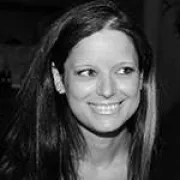Back in 1980's, landscape photographs went largely unexamined, perhaps because they were then presumed to be benign and less politically loaded than pictures of human bodies.
Ever since its invention back in the 18th century, photography has been documenting life. At the same time it focuses on inviting audiences to a rather subjective world, while trying to be taken serious as an art form. Photography has always been considered a male dominated profession, but luckily things are changing. Scholars, writers, bloggers, photography students and enthusiasts have been giving due to the female pioneers of the field. Most of them were always standing and/or hiding in the shadows, oblivious to how much they could acclaim and accomplish. Arguably, the technique, concepts and thematic female photographers use differ from those of a male photographer. At a time when most women were convinced that their place was in the kitchen and certainly not in the dark room, there were those who were struggling to surpass their male counterparts and work towards gaining respect and recognition for their work.

Deborah Bright (American photographer, 1950-) grew up in Washington D.C. and received an M.F.A. from the University of Chicago when she was 25 years old. In 1989, she joined the faculty at the Rhode Island School of Design, teaching both Photography and History of Art and Visual Culture. She soon assumed the position of Acting Dean of Fine Arts and then left RISD to become Chair of Fine Arts at the Pratt Institute. Bright's work has been recognized with numerous exhibitions around the world and has been included in the permanent collections of museums and galleries. She has received many grants, fellowships and awards - both for her art and for her writing - including a Research Fellowship in Photography/Media Studies from Plymouth University. Deborah is the author of many essays on photography and cultural issues that have appeared in Art Journal, Afterimage, Exposure and a variety of photography books and periodicals. The photographer, artist, writer and educator is mostly notable for her writing and photographic bodies of work on LGBT, queer and women's rights subject matters. Bright has also shown an artistic interest in the American landscape's ability to represent the culture and history of an area. The internationally exhibited artist is also the author and publisher of The Passionate Camera: Photography and Bodies of Desire, a ground-breaking collection of images and writings on photography and queer politics that was nominated for a Lambda Literary Award. The Brooklyn-based artist is still active today and currently serves on the board of the Leslie-Lohman Museum of Art.

Tuija Lindström (Finnish-Swedish photographer, 1950-2017) was born in Kotka, Finland, but lived and worked in Stockholm, Sweden. In 1984, she graduated from Konstfack University College of Arts, Crafts and Design. The photographer and artist was a professor of photography at the Photo Academy, now the School of Photography at the Academy of Fine Arts in Gothenburg. She was Sweden's first female professor in photography, establishing a master's program and laying the foundations for ongoing photographic research. In the early 1990's, Lindström started gaining attention for her black and white pictures of women floating in a black lake. The project was called Girls at Bull's Pond and addressed feminist issues from a perspective that, at the time, hadn't been previously customary in Sweden. This photographic series can be counted as Tuija's real breakthrough. The great legend of Swedish photography - as they call her - has held several international exhibitions since the 1980's and is represented in museum collections in Sweden and the USA. She has received several grants and awards, including IASPIS - London residency, 2006-2007 and The Swedish Arts Grants Committee in 1984. Lindström's work was mostly centered on a narrative with focused on a female experience where the male gaze and patriarchal structures were investigated. Other subject matters in her work revolve around memories and recollections, time and social issues. Her legacy is big and obviously inspired and fascinated by the very essence of photography and the almost alchemical nature of darkroom work. Her photographs are characterized by material experiments and, for her, the darkroom was a place for her meditative operations; a place where her craftsmanship could coax soft shades, deep blacks and intense contrasts out of paper, chemicals and light.

I am interested in the difference between the male perspective on the world and the female perspective. I think women see different things than men and it shows in photographs. When I was a student in the eighties, I was the only girl in my class! At that time, women weren't allowed to take pictures of themselves, even less naked.
We will continue talking about female names that left their mark in photography and about contemporary female photographers who are still to emerge. There are a lot of female photographers out there deserving of praise and we can only hope to cover as many of them as we can. Please, follow this space to find out more.







